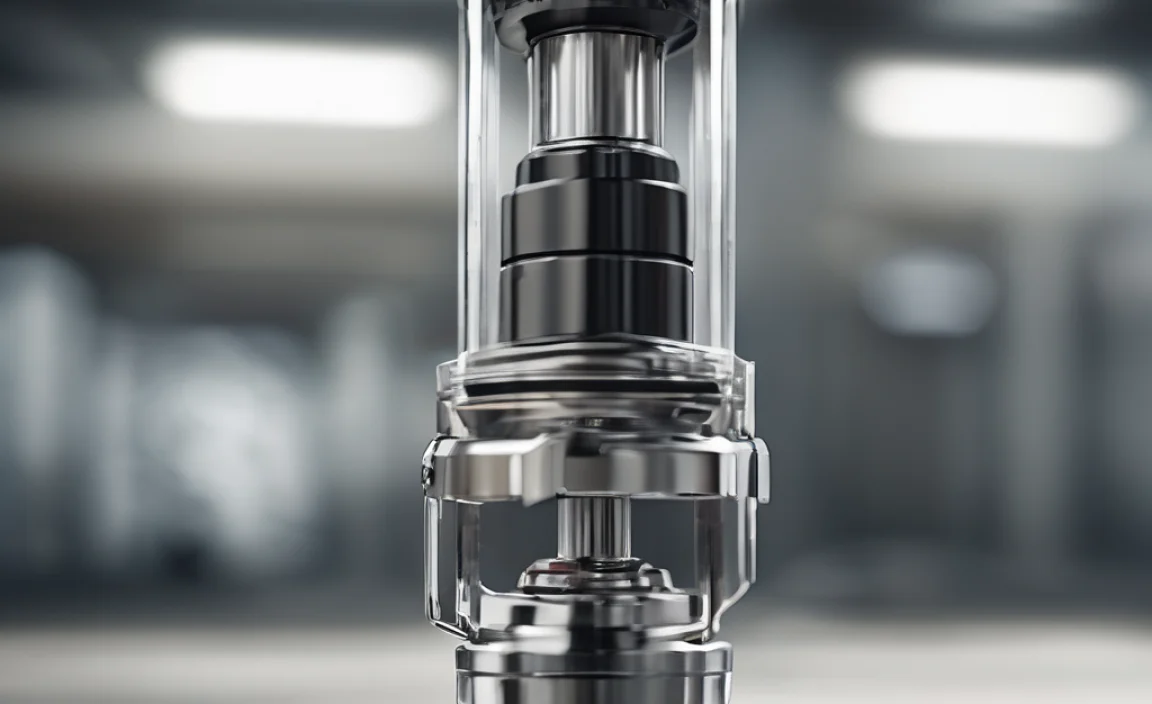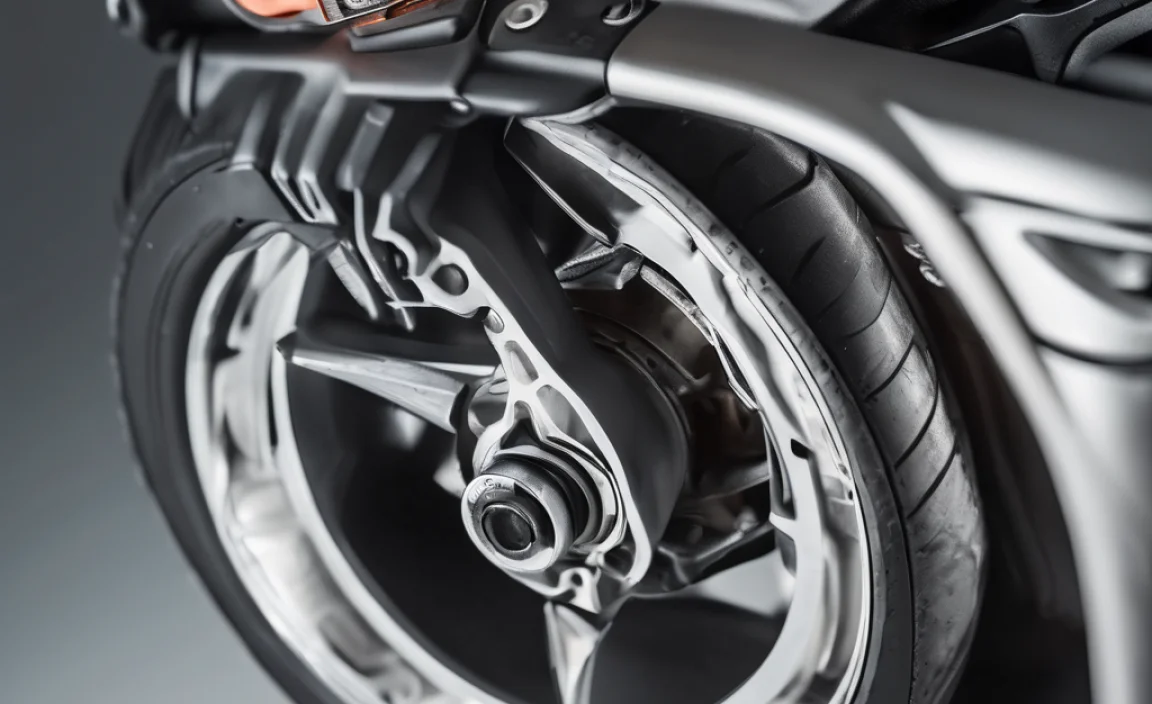Upgrade your GLA-Class suspension for a smoother ride and better handling. Learn about common issues and simple improvements to enhance your driving experience.
Ever feel every little bump on the road in your Mercedes-Benz GLA-Class? You’re not alone! The suspension system is like your car’s shock absorbers, taking hits so you don’t have to. Over time, even the best systems can start to feel a bit tired, leading to a less comfortable ride and maybe even a little less confidence when you’re cornering. It’s a common frustration for many GLA owners. But don’t worry, understanding and improving your GLA-Class suspension system doesn’t have to be complicated. We’ll break down what makes it tick and explore some straightforward ways to give it a serious upgrade. Get ready to transform your drive!
Why Your GLA-Class Suspension Matters

Your Mercedes-Benz GLA-Class suspension system is a marvel of engineering, designed to balance comfort and performance. It’s made up of several key components that work together to keep your tires on the ground, absorb shocks from the road, and ensure a smooth, controlled ride. Think of it as the connection between your car’s body and the wheels. A healthy suspension means better grip, more stable handling, and a significantly more comfortable experience for you and your passengers, no matter the road conditions.
Key Suspension Components Explained
Let’s take a quick look at the main parts of your GLA-Class’s suspension:
- Shock Absorbers (or Dampers): These are the workhorses. They control the bouncing motion of the springs, preventing your car from rocking back and forth after hitting a bump.
- Springs: These support the weight of the vehicle and absorb the initial impact from road imperfections.
- Control Arms: These connect the wheel hub to the car’s frame, allowing the wheels to move up and down while keeping them aligned correctly.
- Sway Bar (or Anti-Roll Bar): This helps reduce body roll when you turn, keeping your car flatter during cornering.
- Bushings: These are rubber or polyurethane pieces that cushion the connections between suspension parts, reducing noise and vibration.
Common GLA-Class Suspension Sintomas Signs of Issues

Even with Mercedes-Benz’s renowned quality, suspension components can wear out. Recognizing the signs can save you from further damage and keep your GLA-Class driving like the luxury vehicle it is. Here are some common symptoms that might indicate your suspension needs attention:
- Rougher Ride: You feel every little crack and bump in the road more than usual.
- Excessive Bouncing: After hitting a bump, the car continues to bounce up and down several times.
- Sinking or Sagging: The car looks lower on one side or generally sags, especially when parked.
- Noisy Operation: You hear clunking, squeaking, or rattling sounds, particularly when going over bumps or turning.
- Uneven Tire Wear: Tires wear out faster in certain spots, like the edges or center.
- Poor Handling: The car pulls to one side, feels unstable during cornering, or the steering feels loose.
- Increased Braking Distance: Your GLA-Class might take longer to stop because the tires aren’t maintaining optimal contact with the road.
Understanding GLA-Class Suspension Upgrades

When it comes to upgrading your GLA-Class suspension, the goal is usually to enhance either comfort, performance, or a balance of both. It’s not just about replacing worn-out parts; it’s about choosing components that better suit your driving style and preferences. As a Mercedes-Benz expert, I always emphasize that the best upgrade is one that aligns with your needs.
Coilovers: The All-in-One Solution
Coilovers are a popular choice for many GLA-Class owners looking for a significant upgrade. The name “coilover” literally means “coil spring over shock absorber.” These are integrated units that replace your stock shocks and springs. They offer several benefits:
- Adjustable Ride Height: This is a major draw. You can lower your car for a sportier look and potentially improved aerodynamics or raise it slightly for clearing obstacles.
- Adjustable Damping: Many coilovers allow you to adjust how stiff or soft the suspension feels. This lets you dial in the perfect balance for comfort on your commute or a firmer setting for spirited driving.
- Improved Handling: High-quality coilovers are often designed for better performance, reducing body roll and providing a more connected feel to the road.
- Performance: They can offer a more precise and responsive suspension setup compared to standard components.
When choosing coilovers, look for reputable brands known for quality and durability. Brands like Bilstein, KW Suspensions, and Eibach often offer excellent options for the GLA-Class. It’s important to note that while coilovers offer great adjustability, improper installation or setting can negatively impact ride comfort and handling.
Performance Springs and Shocks: A Balanced Approach
If you’re not looking for the extensive adjustability of coilovers, a simpler yet effective upgrade is pairing performance springs with performance shock absorbers.
- Performance Springs: These are typically shorter and stiffer than stock springs. They lower the car’s center of gravity, reducing body roll and improving responsiveness.
- Performance Shocks/Dampers: These are designed to work with performance springs. They offer better damping control, which means they can better manage the increased spring rates and keep your tires firmly planted on the road, even during spirited driving.
This combination can provide a noticeable improvement in handling without making the ride overly harsh. It’s a great option for those who want a sportier feel but still prioritize a comfortable daily drive. Brands like H&R and Eibach also offer excellent performance spring and shock packages.
Sway Bars: Reducing Body Roll
For GLA-Class owners who experience significant body roll during cornering, upgrading the sway bars can be a game-changer. Sway bars connect the left and right sides of your suspension, counteracting the tendency for the car’s body to lean outwards when you turn.
- Thicker/Stiffer Sway Bars: Aftermarket sway bars are often thicker and made of stiffer materials. This means they resist twisting more effectively, which directly translates to less body roll.
- Improved Cornering Stability: With reduced body roll, your car will feel much more stable and planted when taking corners at speed.
- Complementary Upgrade: Upgrading sway bars can be done in conjunction with other suspension modifications like coilovers or performance springs and shocks for an even more refined handling experience.
This is a relatively straightforward upgrade and can make a big difference in how your GLA-Class handles dynamic situations.
Calculating Potential Cost and Benefits

Upgrading your GLA-Class suspension system is an investment, and it’s wise to consider both the financial outlay and the advantages you’ll gain. The cost can vary significantly depending on the type of upgrade and the brands you choose.
| Upgrade Type | Estimated Cost (Parts Only) | Primary Benefits | Considerations for DIY |
|---|---|---|---|
| Performance Springs & Shocks | $500 – $1,200 | Improved handling, slight lowering, enhanced ride control. | Moderate difficulty, requires spring compressors and alignment. |
| Coilovers (Entry to Mid-Level) | $900 – $2,000 | Adjustable ride height and damping, significant handling improvement, sportier stance. | Moderate to high difficulty, requires specialized tools and precise alignment. |
| Performance Sway Bars | $200 – $500 | Reduced body roll, improved cornering stability. | Moderate difficulty, access can be tricky. |
| Complete High-Performance Kit (e.g., Motec, Ohlins) | $2,500+ | Track-level performance, superior adjustability, ultimate control. | High difficulty, often requires professional installation and tuning. |
Important Note: These are estimates for parts only. Professional installation costs can add anywhere from $300 to $1,000+ depending on the complexity of the job and your local labor rates. Always get a precise quote from your mechanic.
The benefits extend beyond just a better feel behind the wheel. A well-tuned suspension can:
- Enhance Safety: Better grip and control mean safer driving, especially in challenging conditions.
- Improve Tire Life: Proper alignment and controlled suspension movement can lead to more even tire wear.
- Increase Driving Enjoyment: Transform your daily commute or weekend drives into a more engaging and comfortable experience.
- Potentially Increase Resale Value: A well-maintained and potentially upgraded suspension can be a selling point.
DIY vs. Professional Installation

One of the biggest decisions when upgrading your GLA-Class suspension is whether to tackle it yourself or enlist the help of a professional mechanic. As someone who enjoys working on cars, I appreciate the satisfaction of a DIY job, but it’s crucial to be realistic about your skills and tools.
When to Go DIY:
- You have the right tools: A good set of wrenches, sockets, a torque wrench, and crucially, a certified spring compressor are essential. You can find detailed guides on essential tools from automotive resources like Haynes or Chilton manuals, and also check out trusted tool manufacturers like Snap-on Tools for professional-grade equipment.
- You have mechanical aptitude: You’re comfortable with tasks like removing wheels, working with suspension components, and following detailed instructions.
- You have time and patience: Suspension work can be time-consuming and sometimes frustrating.
- You’re replacing simple components: Swapping out stock shocks and springs for an equivalent performance package that doesn’t involve significant ride height changes can be more manageable.
When to Seek Professional Help:
- You’re installing coilovers with adjustable damping and height settings: Achieving the perfect alignment and setting these up correctly often requires specialized knowledge and equipment. Mistakes can lead to poor performance or damage.
- You lack specialized tools: Spring compressors, in particular, can be very dangerous if not used correctly.
- You’re unsure about any step: Safety is paramount, and if you have any doubts, it’s always best to let a professional handle it.
- You want a warranty on labor: Professional shops often provide a warranty on their work.
- Post-installation alignment: After any suspension work, a professional wheel alignment is crucial to ensure proper handling, tire wear, and safety. You can learn more about the importance of wheel alignment from the Society of Automotive Engineers (SAE) or reputable automotive repair resources.
For most GLA-Class owners, especially beginners, a combination approach can work well: research and purchase your desired parts, but have a trusted mechanic perform the installation and the all-important wheel alignment.
Step-by-Step: How to Upgrade Your GLA-Class Suspension (Conceptual)
This is a general overview for replacing springs and shocks, which is one of the more common DIY upgrades. Always refer to your specific GLA-Class model’s service manual and the manufacturer’s instructions for the parts you’ve purchased. Safety first!
- Gather Your Tools and Parts: Ensure you have everything ready before you start. This includes new suspension components, jack stands, a floor jack, lug wrench, socket set, torque wrench, the aforementioned spring compressor, and safety glasses.
- Safely Lift and Secure the Vehicle: Park your GLA-Class on a level surface. Use your floor jack to lift the front or rear of the vehicle, and then securely place jack stands under the designated support points on the frame. Never work under a car supported only by a jack.
- Remove the Wheel: Loosen the lug nuts on the wheel you’re working on, then remove them completely and take off the wheel.
- Locate and Disconnect Suspension Components: Identify the shock absorber and spring assembly. You’ll likely need to remove brake lines, ABS sensors, or sway bar end links that are attached to the suspension knuckle.
- Compress the Spring: This is the most critical and potentially dangerous step. Using your spring compressor, carefully attach it to the old spring and compress it evenly until there’s no tension on the top mount.
- Remove the Old Assembly: With the spring compressed, you can now unbolt the top strut mount from the vehicle’s body. Then, carefully remove the entire shock absorber and spring assembly.
- Transfer or Install New Components: If you purchased standard shocks and springs, you’ll need to transfer the top mount from the old shock to the new one. If you have coilovers or a complete strut assembly, this step might be simpler. Ensure the new spring is seated correctly.
- Reinstall the New Assembly: Carefully place the new assembly back into position and loosely thread the top mount bolts.
- Decompress the Spring: Slowly and evenly release the tension on the spring compressor. Ensure the spring seats properly at both the top and bottom.
- Reconnect Other Components: Reattach any brake lines, sensors, or links you disconnected earlier.
- Torque Everything to Spec: Once the assembly is in place, use your torque wrench to tighten all bolts and nuts to the manufacturer’s specifications. This is vital for safety and to prevent parts from loosening.
- Reinstall the Wheel: Put the wheel back on and tighten the lug nuts in a star pattern. Lower the vehicle carefully.
- Repeat for Other Wheels: Follow the same procedure for the remaining wheels.
- Professional Wheel Alignment: Immediately after completing the installation, take your GLA-Class to a professional auto shop for a thorough wheel alignment. This is non-negotiable for safety and proper handling.
Remember to consult specific guides and videos for your GLA-Class model year for the most accurate advice.
FAQ: Your GLA-Class Suspension Questions Answered
Q1: Will upgrading my GLA-Class suspension void my warranty?
It might. Modifying the suspension can potentially void the warranty on the suspension components themselves, and in some cases, related systems if the modification is deemed to have caused an issue. However, it generally won’t void your entire vehicle warranty unless the modification directly causes a problem covered by the warranty. It’s always best to check your warranty terms or ask your dealership.
Q2: How much lower will my GLA-Class be after an upgrade?
This depends entirely on the parts you choose. Performance springs typically lower a car by 1-2 inches (25-50mm). Coilover systems offer adjustable ride height, so you can choose your desired drop, anywhere from a mild lowering to a more aggressive stance, within safe limits.
Q3: Is a softer or firmer suspension better for my GLA-Class?
It depends on your priority. A softer suspension offers more comfort by absorbing bumps better, ideal for daily driving on rough roads or for long journeys. A firmer suspension provides better handling and road feel, reducing body roll during cornering, which is great for performance driving but can be less comfortable on uneven surfaces.
Q4: Can I mix and match brands for suspension parts?
While you might be able to, it’s generally recommended to use components designed to work together. For example, performance springs are engineered to match the damping characteristics of performance shocks. Using parts from different manufacturers without proper research could lead to suboptimal performance or premature wear.
Q5: How do I know if my GLA-Class needs an alignment after suspension work?
If you’ve replaced any suspension components, especially springs or coilovers, an alignment is almost always necessary. Signs you need an alignment include your car pulling to one side, uneven tire wear, or a steering wheel that isn’t centered when driving straight. It’s best practice to get one after any suspension modification.
Q6: Are there any maintenance tips for my upgraded suspension?
Keep suspension components clean and free from excessive dirt and road salt, which can accelerate corrosion. Periodically inspect bushings for cracks or wear. For adjustable coilovers, ensure adjustment collars remain free and unseized, perhaps by applying a light lubricant or anti-seize during installation. Regularly check that all bolts are securely torqued.
Conclusion
Upgrading your Mercedes-Benz GLA-Class suspension system is a fantastic way to enhance your driving experience, whether you prioritize comfort, performance, or a perfect blend of both. By understanding the key components, recognizing common issues, and exploring the various upgrade options available – from performance springs and shocks to adjustable coilovers – you can make informed decisions that will transform how your GLA-Class feels on the road. Remember, safety is paramount, so always consider your mechanical skill level for DIY installations,